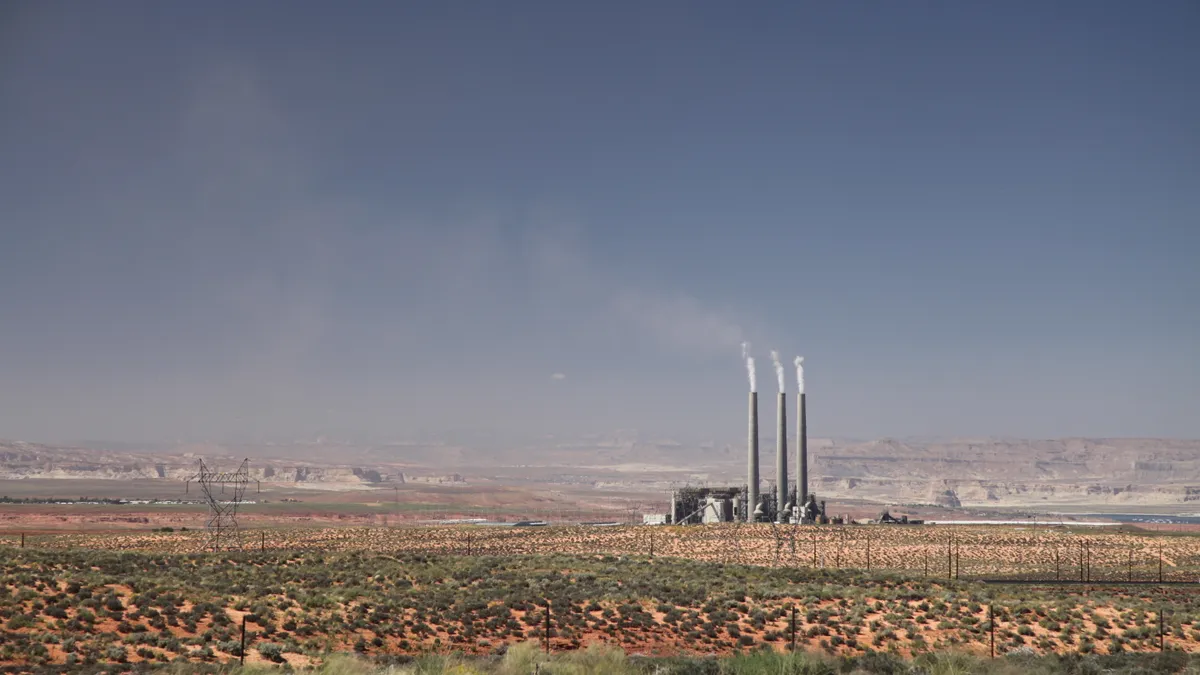Dive Brief:
- Four utilities led by plant operator Salt River Project have decided to shutter the coal-fired Navajo Generating Station (NGS) near Page, Ariz., by 2019. The 2,250 MW plant is the largest coal generator in the western United States.
- Competition from inexpensive natural gas generators means electricity from NGS is already more expensive than wholesale power prices, the utilities said in a release, a trend that's not expected to reverse in coming years. The decision is the second major coal shuttering announcement in less than a month.
- The deal announced this week aims to maintain employment at the plant for almost three years, while also preserving revenues for the Navajo and the Hopi tribes. It also allows the Navajo Nation or others to continue operating the plant beyond 2019, though the current group of owners will not be involved.
Dive Insight:
Natural gas generation is already cheaper than power from NGS, and electricity from the 1970s-era coal plant is only expected to get more expensive in the coming years.
Last year, the National Renewable Energy Laboratory issued analysis that pegged the cost of power generated at NGS at $38/MWh, compared with $32 in 2015. After 2019, that cost will rise to $41/MWh, reflecting terms of a new lease, and then $51/MWh in 2030 due to emissions standards (provided they are not rolled back by the Trump administration).
That reality has led the plant's four owners to say they're shutting it down, though they leave option the option that another group could take it over. The U.S. Bureau of Reclamation owns about a quarter of the NGS plant, while SRP claims 43%. Arizona Public Service, NV Energy, and Tucson Electric Power own the remaining shares.
“The utility owners do not make this decision lightly,” SRP Deputy General Manager Mike Hummel said in a statement. “However, SRP has an obligation to provide low-cost service to our more than 1 million customers and the higher cost of operating NGS would be borne by our customers.”
While shuttering the plant may make economic sense for the utilities, regulators are worried about the regional impact. Earlier this month, Arizona Corporation Commissioner Andy Tobin called for an "emergency summit" to address the potential job losses related to closing down plant.
Tobin stressed that almost 3,000 Navajo Nation jobs are in jeopardy, and in a letter to SRP leadership said they face "economic devestation." The utility "must fully explain to the tribes and the people of Arizona how it plans to address the human toll the company will cause if NGS closes," he wrote.
The 2019 closure date is contingent on the utilities coming to an agreement with the Navajo Nation to allow the decommissioning of the plant after its current lease expires, the Arizona Republic notes. If no deal is reached, NGS would have to be closed by the end of this year to allow it to be torn down by 2020.
The 2,250 MW power plant serves electric customers in Arizona and Nevada, and also supplies most of the power needed to pump water through the Central Arizona Project, the largest single source of renewable water supplies in Arizona. In a statement, the Central Arizona Project said it "understands and cannot disagree with the owners’ decision based on this economic reality."
The decision is the second major coal closure in less than a month, the Washington Post notes. In late January, Dayton Power & Light announced it would close 2,093 MW of coal generation for economic reasons, including the 2,441 MW Stuart plant.















